Text
Javalin Sand Boa!
The Javelin Sand boa (Eryx jaculus) is found in Eastern Europe, North Africa and the Middle East
The way they got their name is a little sad. The ancient Greeks used to throw them at enemy ships to distract and confuse the enemies, as well as the poor snake
If you have read this far why not follow us @animalfacthub for daily animal facts and pics!
-
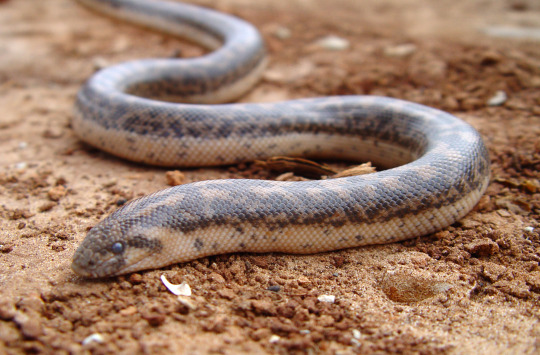
📷1: “Eryx jaculus.jpg” by Guy Haimovitch on Wikimedia Commons (CC BY-SA 3.0)
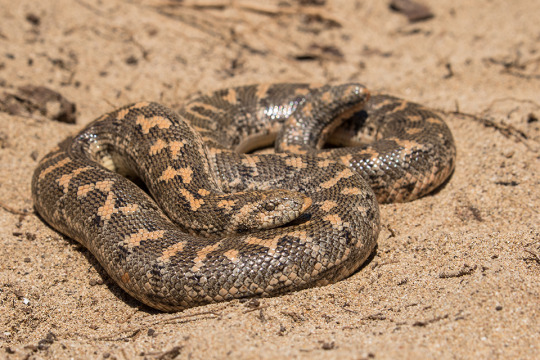
📷2: “Kalaentzis Eryx jaculus Peloponnese.png” by Konstantinos Kalaentzis on Wikimedia Commons (CC BY-SA 4.0)

📷3: “Benny Trapp Eryx jaculus.jpg” by Benny Trapp on Wikimedia Commons (CC BY-SA 3.0)
7 notes
·
View notes
Text
Electric Eel!
The electric eel is the most shocking out of all the animals that are able to shock
They are able to produce a max shock of 600 volts and 1 ampere
They are also not eels but a member of the knifefish family
If you have read this far why not follow us @animalfacthub for daily animal facts and pics!
-
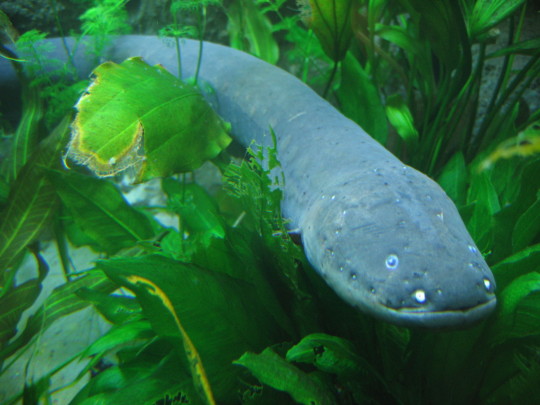
📷1: “Electric Eel” by Scott on Flickr (CC BY-SA 2.0)

📷2: “Electric eel (Electrophorus electricus) (15595062280).jpg” by harum.koh on Wikimedia Commons (CC BY-SA 2.0)
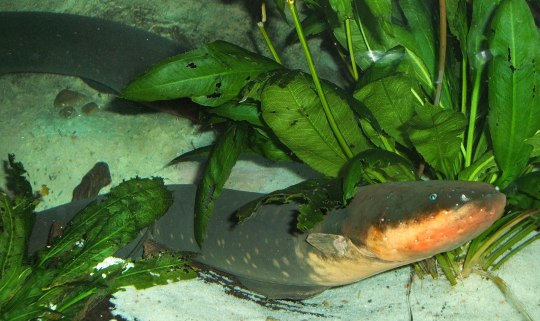
📷3: “Electric-eel (cropped).jpg” by Steven G. Johnson on Wikimedia Commons (CC BY-SA 3.0)
8 notes
·
View notes
Text
Black and White Tegu!
The black and white tegu is a large species of lizard originally from Argentina
They are the largest of the tegu species growing up to a max of 140cm
If you have read this far why not follow us @animalfacthub for daily animal facts and pics!
-

📷1: “Argentine Black and White Tegu (Salvator merianae) male - Flickr - berniedup.jpg” by Bernard DUPONT on Wikimedia Commons (CC BY-SA 2.0)
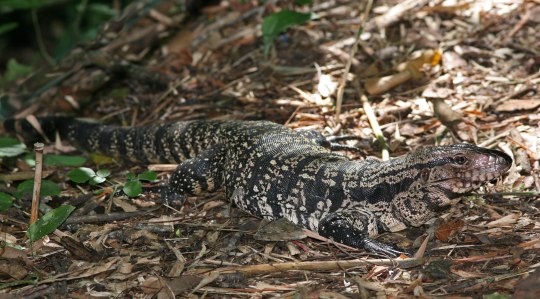
📷2: “Black and White Tegu.jpg” by Tomfriedel on Wikimedia Commons (CC BY-SA 3.0)
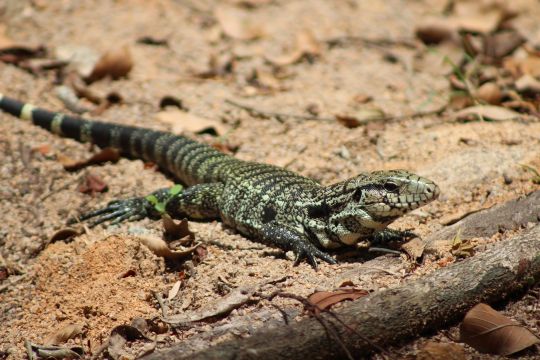
📷3: “Black and white tegu.JPG” by Patricia Carabelli on Wikimedia Commons (CC BY-SA 4.0)
0 notes
Text
Kiwi!
The kiwi is one of 4 species of small flightless birds with the tallest only growing to a height of 45cm
However! Despite this, they are related to emus and ostriches
They lay the largest eggs in comparison to their body size being one-third the total length
If you have read this far why not follow us @animalfacthub for daily animal facts and pics!
-

📷1: Public Domain

📷2: “Apteryx mantelli -Rotorua, North Island, New Zealand-8a.jpg” by The.Rohit on Wikimedia Commons (CC BY 2.0)

📷3: “Okarito kiwi 2.jpg” by Mark Anderson on Wikimedia Commons (CC BY-SA 4.0)
1 note
·
View note
Text
Christmas Tree Worms!
The Christmas tree worm (pirobranchus giganteus) burrows into coral to make a home for itself
It then uses its long bristles to filter feed
If you have read this far why not follow us @animalfacthub for daily animal facts and pics!
-
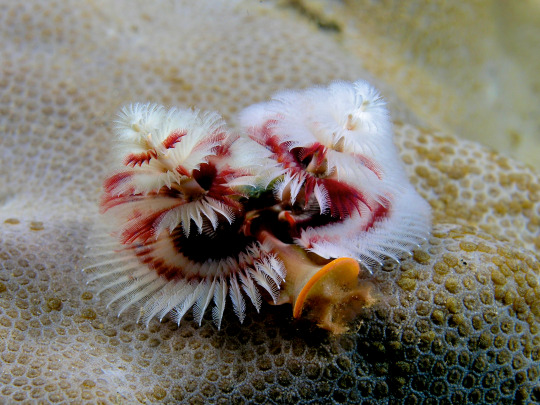
📷1: “Spirobranchus giganteus (Red and white christmas tree worm).jpg” by Nick Hobgood on Wikimedia Commons (CC BY-SA 3.0)

📷2: “Spirobranchus giganteus (assorted Christmas tree worms).jpg” by Nick Hobgood on Wikimedia Commons (CC BY-SA 3.0)

📷3: “Spirobranchus giganteus at Gili Lawa Laut.JPG” by Alexander Vasenin on Wikimedia Commons (CC BY-SA 3.0)
14 notes
·
View notes
Text
Pumpkin Patch Tarantula!
The pumpkin patch tarantula is a beautiful species of dwarf tarantula found in Colombia
They are highly sort after as pets
If you have read this far why not follow us @animalfacthub for daily animal facts and pics!
-

📷1: “Chromatopelma cyaneopubescens spiderling.jpg” by DigitalLem0n on Wikimedia Commons (CC BY-SA 4.0)

📷2: “Hapalopus sp. Columbia” by nicodimus22 on arachnoboards
0 notes
Text
The Blue Dragon!
The Blue Dragon (Glaucus atlanticus) is a species of sea slug that swims upside on the surface of the ocean looking for its food, the Portuguese man o’ war
They take the venom-filled nematocysts while they eat the man o’war and use them in their own tentacles as a defence
If you have read this far why not follow us @animalfacthub for daily animal facts and pics!
-

📷1: “Blue dragon-glaucus atlanticus (8599051974).jpg” by Sylke Rohrlach on Wikimedia Commons (CC BY-SA 2.0)
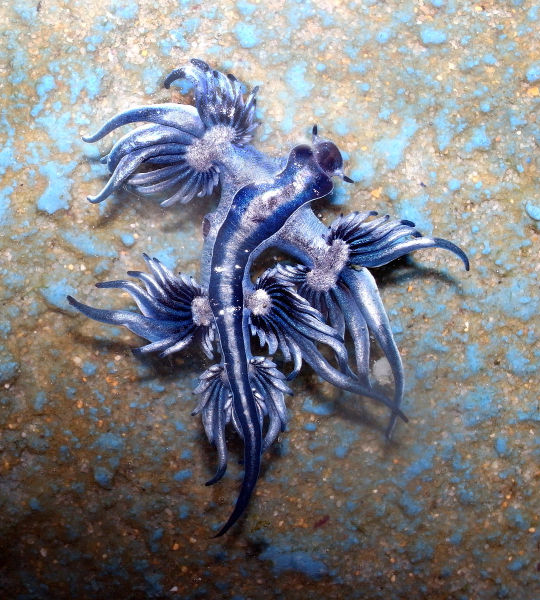
📷2: “Blue dragon-glaucus atlanticus (15933467033).jpg” by Sylke Rohrlach on Wikimedia Commons (CC BY-SA 2.0)
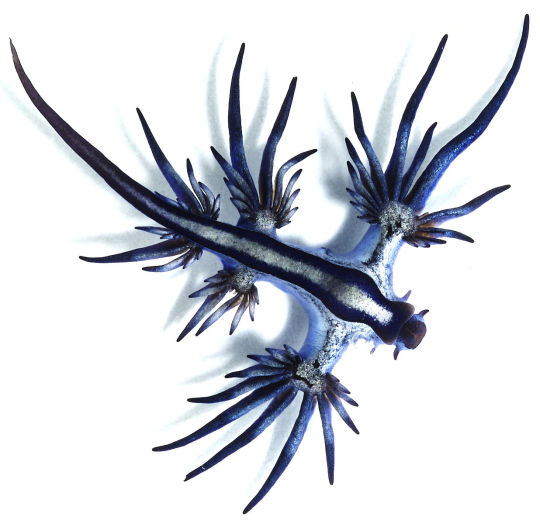
📷3: “Glaucus atlanticus 1 cropped.jpg” by Taro Taylor on Wikimedia Commons (CC BY 2.0)
3 notes
·
View notes
Text
Kinkajou!
The kinkajou is a relative of the racoon, olingos, coatis and cacomistle
These animals spend nearly their whole lives up in the trees and they are very well adapted to that life
They have a fully prehensile tail that they use kind of like a fifth arm and their ankles are able to turn 180 degrees making clubbing up and down trees easy
If you have read this far why not follow us @animalfacthub for daily animal facts and pics!
-

📷1: “Kinkajou (Potos flavus)” by Josh More on Flickr (CC BY-NC-SA 2.0)
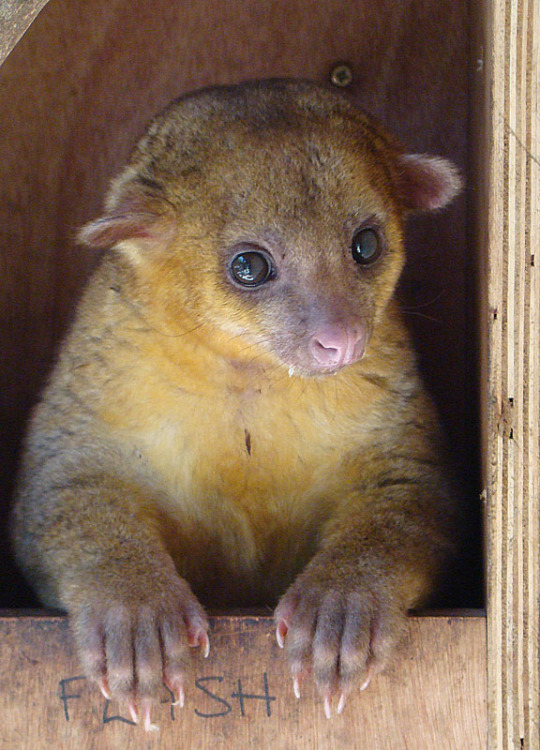
📷2: “Potos flavus” by Dick Culbert on Flickr (CC BY 2.0)
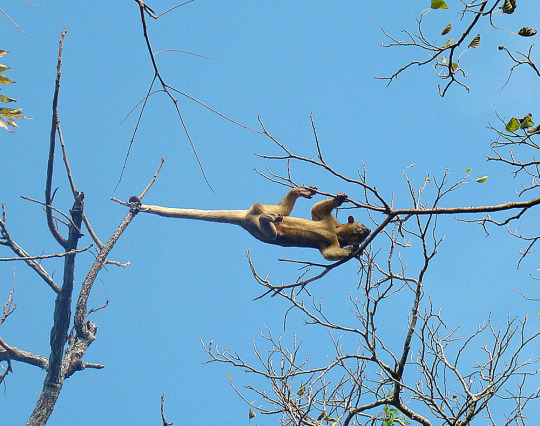
📷3: “Potos flavus (8973438561).jpg” by Dick Culbert on Wikimedia Commons (CC BY 2.0)
0 notes
Text
Largest American Moth!
The Cecropia silkmoth (Hyalophora cecropia) is the largest native moth to North America with females having a span of over 16cm
Their larvae have a sweet tooth because they are mainly found on maple trees
If you have read this far why not follow us @animalfacthub for daily animal facts and pics!
-

📷1: “Cecropia silk moth (Hyalophora cecropia)” by Elizabeth Sellers on Wikimedia Commons (CC BY-NC-SA 2.0)

📷2: “Flickr - Furryscaly - Columbia Silk Moth.jpg” by Matt Reinbold on Wikimedia Commons (CC BY-SA 2.5)

📷3: “Hyalophora cecropia caterpillar.jpg” by Michael Hodge on Wikimedia Commons (CC BY 2.0)
5 notes
·
View notes
Text
Turtle Frog!
The turtle frog is a species of frog that skips the tadpole stage from Australia
They live in arid sandy areas so they form into frogs within the egg capsule
If you have read this far why not follow us @animalfacthub for daily animal facts and pics!
-

📷1: “Myobatrachus gouldii (front).png” by Stephen Zozaya on Wikimedia Commons (CC BY 2.5)

📷2: “Myobatrachus gouldii (head).png” by Stephen Zozaya on Wikimedia Commons (CC BY 2.5)

📷3: “Myobatrachus gouldii (lateral view).png” by Stephen Zozaya on Wikimedia Commons (CC BY 2.5)
8 notes
·
View notes
Text
Boa Constrictor!
The red-tailed boa also called the common boa (Boa constrictor) is the most widespread boa species
They grow anywhere from 0.9m up to 4m and although they usually weigh around 20 kg they can get up to 40kg
If you have read this far why not follow us @animalfacthub for daily animal facts and pics!
-

📷1: “Plectostoma obliquedentatum.jpg” by Schilthuizen on Wikimedia Commons (CC BY-SA 4.0)

📷2: Public Domain

📷3: Public Domain
3 notes
·
View notes
Text
Plectostoma Obliquedentatum!
Plectostoma Obliquedentatum is a species of land snail from Borneo Malaysia
They as well as other members of the genus Plectostoma have spectacular shells
If you have read this far why not follow us @animalfacthub for daily animal facts and pics!
-

📷1: “Plectostoma obliquedentatum.jpg” by Schilthuizen on Wikimedia Commons (CC BY-SA 4.0)
0 notes
Text
Steller’s Sea Eagle!
Steller’s sea eagle (Haliaeetus pelagicus) is found throughout Northeast Asia as well as Russia
They are the largest species in the genus Haliaeetus with the largest specimens getting over 9kg and they have a wingspan of 2.5m
If you have read this far why not follow us @animalfacthub for daily animal facts and pics!
-

📷1: “Haliaeetus pelagicus (Rausu, Japan).jpg” by Michael Pinczolits on Wikimedia Commons (CC BY 2.0)
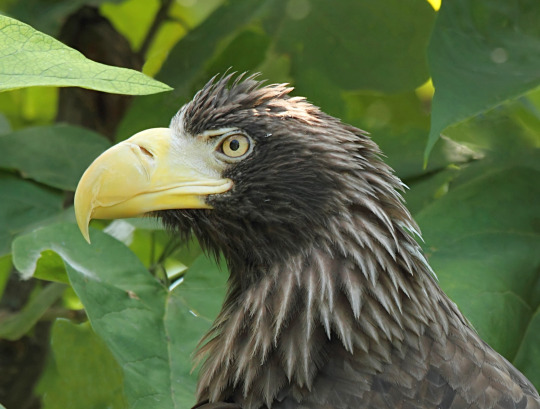
📷2: “Steller'sSeaEagle.jpg” by Greg Hume on Wikimedia Commons (CC BY-SA 3.0)

📷3: “Белоплечий орлан - краснокнижный вид.jpg” by Кирилл Уютнов on Wikimedia Commons (CC BY-SA 4.0)
0 notes
Text
Barrel Eye Fish!
The barrel eye fish (Macropinna Microstoma) is a deep sea fish with a clear transparent head
The circles on the front of its that look like eyes are actually its nose and its eyes are the big green circles in the middle of its head
If you have read this far why not follow us @animalfacthub for daily animal facts and pics!
-

📷1: “Macropinna Microstoma.png” by Kim Reisenbichler on Wikimedia Commons (CC BY-SA 4.0)

Closer look at the eyes
5 notes
·
View notes
Text
Flying Squirrel!
Flying squirrels are one of 50 species of squirrel in the family Sciuridae
They aren’t able to fly like birds or bats but they are expert gliders using their patagium
That is a parachute-like membrane that stretches from wrist to ankle allowing them to stay airborne for a long time
If you have read this far why not follow us @animalfacthub for daily animal facts and pics!
-

📷1: “set to soar” by Christian Collins on Wikimedia Commons (CC BY-SA 2.0)

📷2: “Jill Flying 1.jpg” by Bluedustmite on Wikimedia Commons (CC BY-SA 3.0)

📷3: “Southern Flying Squirrel - Glaucomys volans, Long Branch Nature Center, Arlington, Virginia, December 22, 2020” by Judy Gallagher on Wikimedia Commons (CC BY 2.0)
2 notes
·
View notes
Text
Parson’s Chameleon!
The parsons chameleon (Calumma parsonii) is often cited as the largest chameleon species
Particularly by weight. However, the Malagasy giant chameleon is slightly longer
If you have read this far why not follow us @animalfacthub for daily animal facts and pics!
-

📷1: “Parson's Chameleon.jpg” by Steve Wilson on Wikimedia Commons (CC BY 2.0)

📷2: “Calumma Parsonii Ste Marie Madagascar.jpg” by JialiangGao on Wikimedia Commons (CC BY-SA 4.0)

📷3: “Parson's Chameleon (Calumma parsonii) female ... (Captive specimen) (45001557052).jpg” by Bernard DUPONT on Wikimedia Commons (CC BY-SA 2.0)
1 note
·
View note
Text
Upside-Down Jellyfish!
There are 8 species in the genus Cassiopea and are some of the coolest jellyfish out there
They are nicknamed upside-down jellyfish because the medusa of the jellyfish is usually on the ground
They also form a symbiotic relationship with photosynthetic dinoflagellates meaning yes, they do get the majority of their energy the same way plants do
If you have read this far why not follow us @animalfacthub for daily animal facts and pics!
-

📷1: “Upside down jellyfish.jpg” by Biablio on Wikimedia Commons (CC BY-SA 3.0)
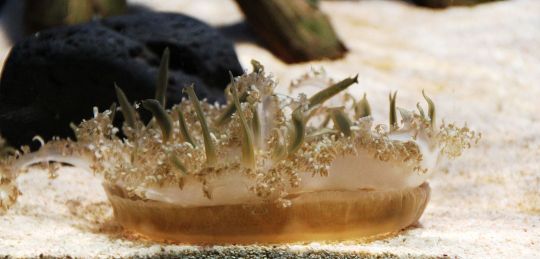
📷2: “Cassiopeia xamachana upsidedown jellyfish LoroParque IMG 5405.JPG” by Bjoertvedt on Wikimedia Commons (CC BY-SA 4.0)
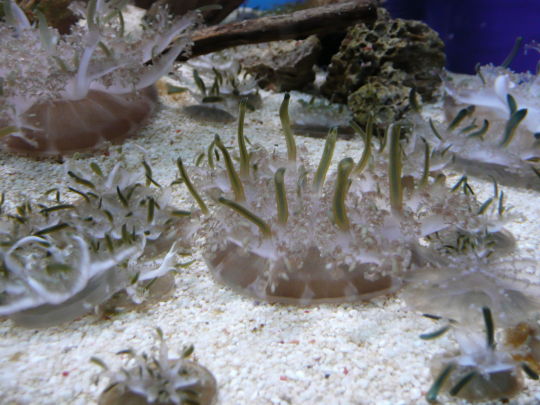
📷3: “Cassiopeia xamachana 05 by Line1.jpg” by Liné1 on Wikimedia Commons (CC BY-SA 3.0)
14 notes
·
View notes